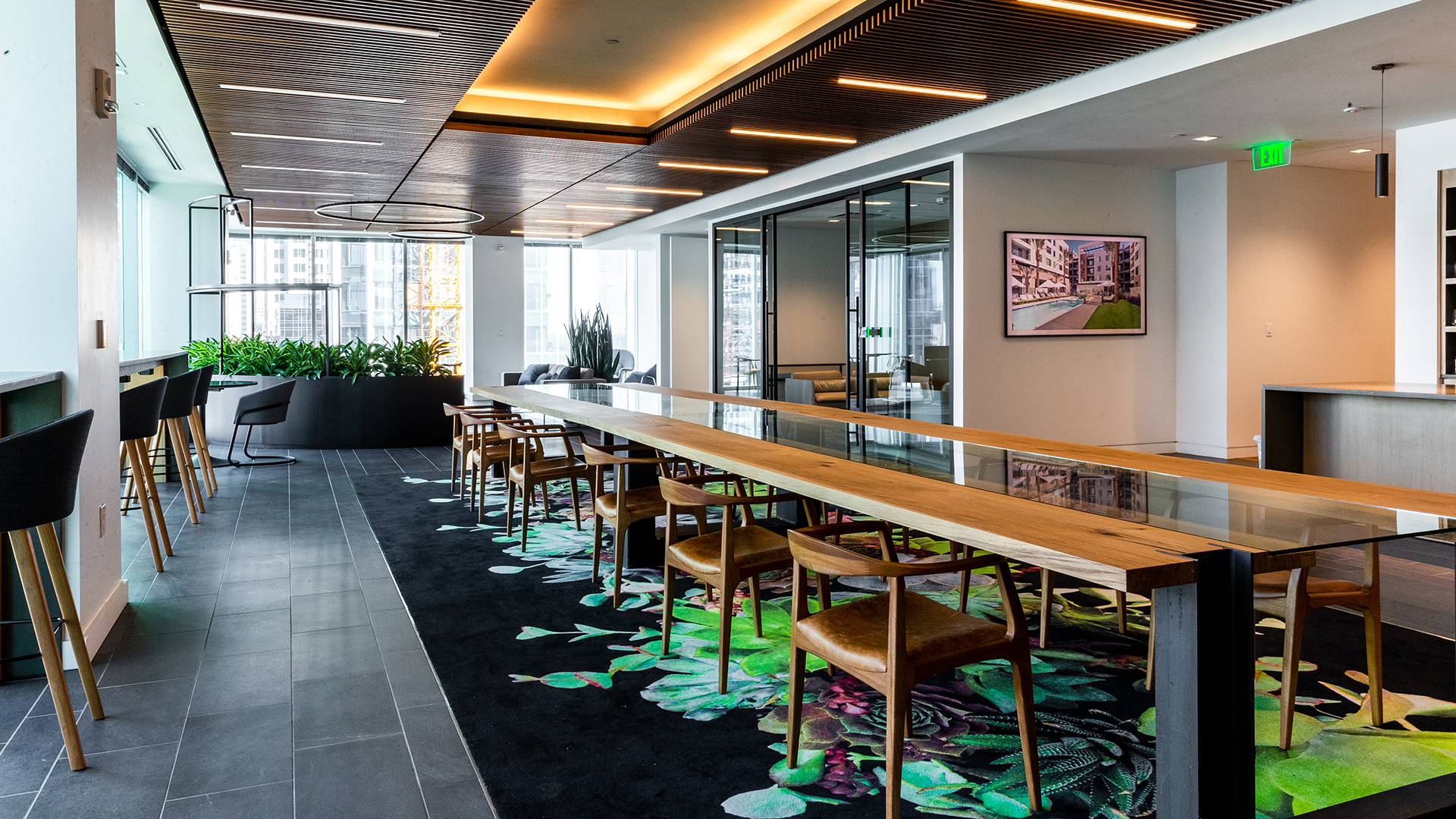You’ve probably heard the saying, “Perfection is the enemy of good.” Nowhere is that more true than in the world of building materials.
Every building product— from steel to flooring to paint — has ingredients and impacts that go far beyond use and appearance. Materials transparency is about revealing what’s in those products and understanding how they affect people, the environment, and long-term value. Think of it like a nutrition label for your building.
The challenge is that no material is perfect. But that doesn’t mean you can’t make better choices. With the right information, you and your design team can select materials that protect occupant health, support sustainability goals, and reduce long-term risks. At Little, we use a “Good, Better, Best” approach to help clients balance priorities and make confident decisions that align with their values and project goals.
WHY MATERIALS TRANSPARENCY MATTERS NOW
In the past, choosing materials often meant filing away technical Materials Safety Data Sheets (MSDS) for compliance. Today, the stakes are higher. Clients, occupants, and communities expect buildings to be healthier, more sustainable, and more equitable. Materials transparency responds to this demand by uncovering what products are made of, how they’re produced, and how they impact people and the planet.
As professionals, we seek absolute clarity. But when it comes to materials, there’s rarely a simple yes-or-no answer. Transparency depends on three things: the data that’s available, how much manufacturers are willing to share, and whether clear standards exist across the industry. Because those pieces don’t always align, a “Good, Better, Best” approach offers a flexible framework for confident decision-making as the industry evolves.
GOOD: BUILDING CONFIDENCE THROUGH BASIC TRANSPARENCY
The first step toward better material choices is simply asking questions and reviewing basic disclosures. At this stage, we look for tools like Health Product Declarations (HPDs) or manufacturers’ transparency reports. Think of these as the nutrition labels of the building industry, as they provide a clear baseline of what’s in a product and how it may affect people and the environment.
Even at this “Good” level, you benefit from working with manufacturers who are willing to share information. By starting here, your project takes a meaningful step toward protecting occupants, reducing risk, and building long-term value.
An example of this “Good” level type of material would be luxury vinyl tile (LVT). Transparency information is available, however, most LVT contains polyfluoroalkyl substances (PFAS), a.k.a. forever chemicals.
BETTER: TURNING AWARENESS INTO ACTION
At the “Better” level, material choices go beyond basic awareness and begin to reflect your project’s unique goals and values. Here, we focus on products that not only disclose information but also have third-party verification through Environmental Product Declarations (EPDs) or carry recognized labels like Declare. These added layers of accountability give you greater confidence that the products you’re investing in meet higher standards for health, sustainability, and performance.
By moving to this stage, your project demonstrates a clear commitment to creating healthier environments, aligning with sustainability and Environmental, Social, and Governance (ESG) objectives, and showing stakeholders that you take responsible building practices seriously.
Linoleum would be an example from this “Better” level. It is made from all-natural materials, like linseed oil and wood flour which is free from PFAS. LBC Red List Free Declare Labeled products are available.
BEST: LEADING WITH TRANSPARENCY AND IMPACT
At the “Best” level, material choices focus on industry leaders who go beyond compliance to drive change. These manufacturers actively collaborate to improve disclosure practices, contribute to industry standards, and share lessons learned across the field. Their portfolios feature clear, consistent transparency documentation — and they bring an enthusiasm for openness and continuous improvement.
By selecting products from these leaders, your project not only benefits from healthier, more sustainable materials but also signals to occupants, investors, and the broader community that your organization is committed to leadership, responsibility, and long-term impact.
If eliminating resilient flooring is not an option, select a progressive biobased flooring that is Carbon Negative. It stores more carbon in the material than what’s emitted in the entire supply chain and manufacturing process. Linoleum, rubber, and even carpet carbon negative options are available.
MAKING PROGRESS, NOT PERFECTION
As a design professional, I’m excited about the momentum around material transparency. Industry platforms like the AIA Materials Pledge encourage design firms to evaluate material choices through five lenses that directly impact your project:
- Human health
- Climate health
- Ecosystem health
- Social equity
- Circular economy
Similarly, the Common Materials Framework (CMF), developed by mindful Materials, organizes material attributes into clear, actionable categories. Together, these frameworks bring much-needed clarity and help owners, design professionals, and manufacturers set priorities for healthier, more sustainable projects.
The reality is that no product is perfect. What matters is the willingness to engage, ask questions, advocate for transparency, and make the best decisions possible with the information available. Through a “Good, Better, Best” mindset, your project can move forward — not perfectly, but intentionally — creating spaces that elevates people, reduce risk, and add long-term value for users and the surrounding community in which they live.

